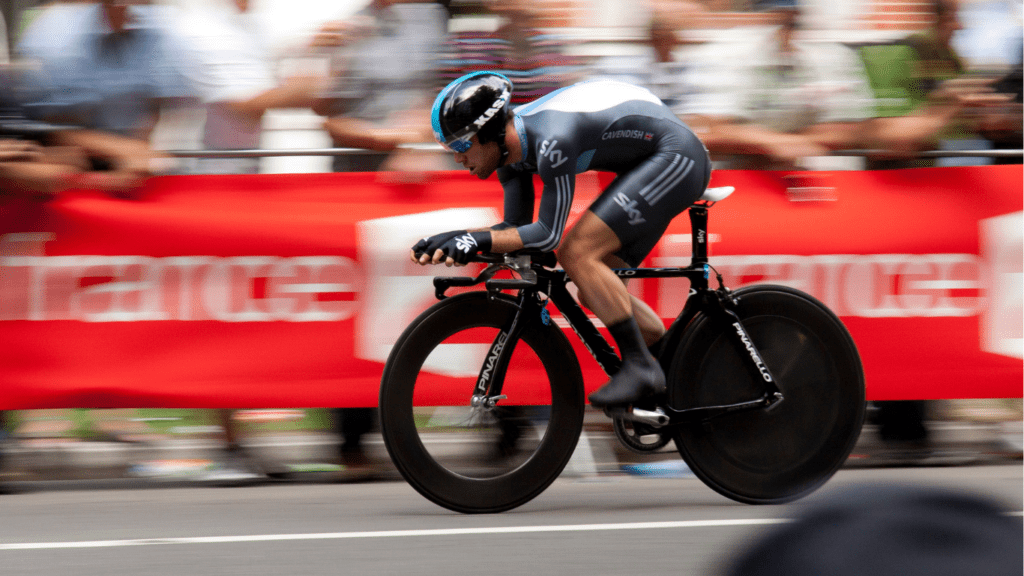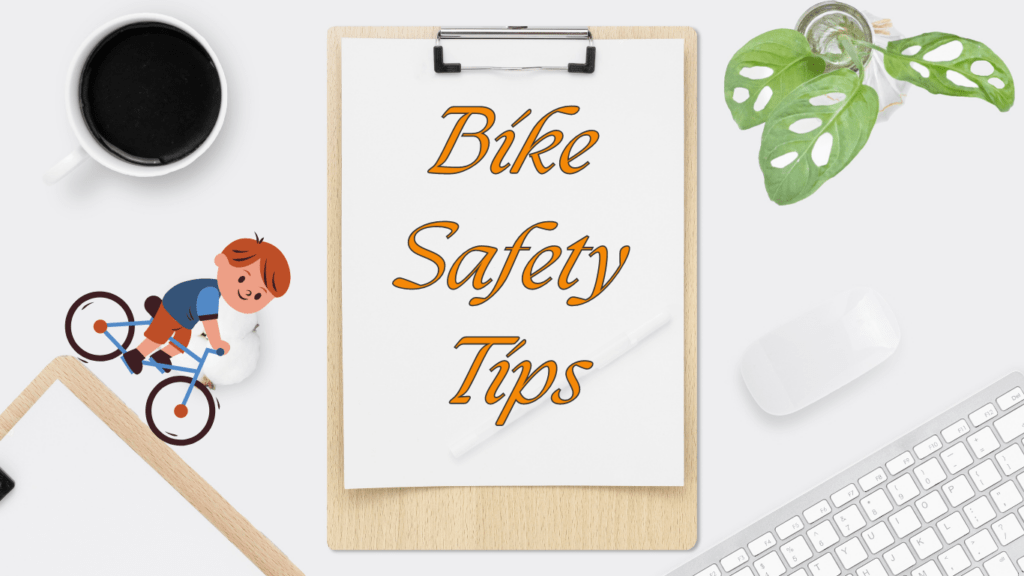Choosing the Right Bicycle
Selecting the right bicycle can make a big difference in your cycling experience, especially for beginners. Understanding the different types and the importance of proper fit ensures a more enjoyable ride.
Types of Bicycles
There are several types of bicycles to choose from based on the terrain and your cycling goals:
- Road Bikes: Designed for smooth, paved roads. These bikes feature lightweight frames and narrow tires. I find them great for long-distance rides and fast speeds.
- Mountain Bikes: Built for off-road cycling. They have sturdy frames and wide, knobby tires. I recommend these for trails and rough terrains.
- Hybrid Bikes: Combine features of road and mountain bikes. They offer versatility, making them suitable for city commuting and light off-road paths. I prefer these for their adaptability.
- Cruiser Bikes: Ideal for casual riding. These bikes have a comfortable, upright riding position and wide tires. I use them for leisurely rides around the neighborhood.
Understanding Bike Fit and Size
A proper bike fit ensures comfort and reduces the risk of injury. Key aspects to consider for bike fitting include:
- Frame Size: Choose a frame size that matches your height and inseam measurement. When I bought my bike, I referred to the manufacturer’s size chart.
- Saddle Height: Set the saddle at a height where your leg is almost fully extended at the bottom of the pedal stroke. This adjustment improved my pedaling efficiency.
- Handlebar Position: Keep the handlebars at a comfortable reach. They should allow a slight bend in your elbows. This positioning alleviated strain on my back and shoulders.
- Brake and Gear Reach: Ensure brake levers and gear shifters are easy to operate. I adjusted mine for quick and safe access during rides.
Choosing the right bicycle involves understanding the types available and ensuring a proper fit. Doing so boosts confidence and enhances your overall cycling experience.
Essential Gear for Cycling Beginners

Starting your cycling journey with the right gear boosts confidence and safety. Comprehensive preparation helps ensure an enjoyable experience.
Safety Equipment
Invest in quality safety equipment to protect yourself on the road. A properly fitting helmet is non-negotiable, offering crucial protection in case of falls or accidents.
Look for helmets certified by organizations like the CPSC (Consumer Product Safety Commission).
Visible clothing enhances visibility, especially during low light conditions. Reflective vests, jackets, and even ankle bands improve your visibility to motorists.
LED lights for front and rear are vital, providing illumination for you and alerting others to your presence.
Protect your eyes from debris and harmful UV rays with cycling glasses. Padded gloves reduce hand fatigue, improve grip, and protect your hands in a fall.
Lastly, comfortable, weather-appropriate clothing prevents chafing and regulates body temperature, increasing comfort over longer rides.
Maintenance Tools
Basic maintenance tools ensure your bike stays in top condition and ready for every ride. A multi-tool is essential, combining various tools like Allen keys and screwdrivers.
It allows you to make quick adjustments on-the-go.
A portable pump and spare tubes prepare you for flat tires. Know how to change a tube before you face this on the road. Tire levers assist in removing and reattaching tires quickly and easily.
Chain lubricant keeps your bike’s drivetrain smooth. Regular lubrication prevents rust and extends component life.
A patch kit is handy for minor repairs on the road, preventing small holes from ending your ride prematurely.
Here is a quick recap of essential gear:
| Item | Purpose |
|---|---|
| Helmet | Head protection in case of accidents |
| Reflective Wear | Increase visibility in low light |
| LED Lights | Provide illumination and alert others of your presence |
| Cycling Glasses | Protect eyes from debris and UV rays |
| Gloves | Reduce hand fatigue and improve grip |
| Multi-Tool | Quick adjustments and repairs |
| Portable Pump | Address flat tires |
| Spare Tubes | Ensure readiness for tube replacements |
| Tire Levers | Remove and reattach tires |
| Chain Lubricant | Maintain drivetrain smoothness |
| Patch Kit | Minor repairs on the road |
Equipped with these essentials, you’re ready to embrace cycling confidently and safely.
Basic Cycling Skills
Learning basic cycling skills builds a strong foundation and boosts confidence. Here’s what beginners should focus on:
Balancing and Steering
Balance is crucial for safe cycling. Practice on flat, open spaces, avoiding crowded areas. Keep eyes forward and shoulders relaxed. Use handlebars to steer smoothly, applying gentle pressure rather than abrupt movements.
Place feet on pedals while maintaining a stable seated position for better control.
Braking and Shifting Gears
Braking efficiently prevents accidents. Use both brakes for controlled stopping. Apply pressure evenly to avoid skidding; more on the rear brake in slippery conditions. Shifting gears helps manage different terrains.
Shift early when approaching inclines to avoid sudden changes. Avoid cross-chaining for smoother transitions and less wear on the bike.
Master these skills to ride confidently and safely.
Planning Your First Ride
Embarking on your first cycling journey can be exciting yet nerve-wracking. Preparation plays a key role in gaining confidence and ensuring a smooth experience.
Choosing a Safe Route
Pick routes with bike lanes or low traffic. Beginners should avoid busy streets and opt for parks or dedicated bike paths. Use maps or cycling apps to find cyclist-friendly routes.
Many local communities have online resources to help plan a safe ride. Feeling comfortable with the chosen path increases confidence and minimizes risks.
Understanding Traffic Rules
Learn the basic traffic rules specific to cyclists. Obeying stop signs, traffic lights, and using hand signals to communicate intentions helps you stay safe.
Always ride on the right side of the road and follow the flow of traffic. Understand local cycling laws, as they can vary by region. Mastering traffic rules ensures you ride safely and responsibly.
Maintaining Your Bicycle
Proper bicycle maintenance ensures a smooth and safe riding experience. Regular checks and upkeep prolong the bike’s lifespan and enhance performance.
Regular Maintenance Tips
Conduct regular maintenance to keep your bike in top condition:
- Tire Pressure: Check tire pressure before every ride using a pressure gauge. Inflating tires to the recommended PSI prevents flats and improves efficiency.
- Chain Lubrication: Apply lubricant to the chain every 100-150 miles or after riding in wet conditions. A well-lubricated chain reduces wear and enhances shifting.
- Brake Inspection: Examine brake pads for wear and replace them if grooves are no longer visible. Check brake cables for fraying and ensure proper tension.
- Bolt Tightening: Use a torque wrench to tighten bolts periodically. Loose bolts can lead to unsafe riding conditions.
- Cleaning: Clean the bike frame, drivetrain, and components regularly. Dirt and grime can cause corrosion and reduce the bike’s performance.
- Alignment: Check wheel alignment by spinning the wheels and looking for wobbles. Misaligned wheels affect handling and stability.
When to Seek Professional Help
Some bike issues require professional expertise:
- Major Repairs: Seek help for frame damage, cracked components, or stripped threads. These issues compromise safety and require specialized tools.
- Suspension Maintenance: Professional service is often needed for suspension systems. Incorrect handling can damage the shocks or forks.
- Complex Adjustments: Involve an expert for gear indexing, complete wheel truing, or hydraulic brake servicing. Precision adjustments ensure optimal performance.
- Annual Tune-Ups: Annual professional tune-ups include comprehensive checks and adjustments. They identify potential problems that may not be obvious.
Maintaining your bicycle helps build confidence in your equipment and ensures safer rides. Regular upkeep and knowing when to seek professional help keep your bike performing optimally.

 I’m Brendamee McCartyierr, and as the founder of Cycle Smooth Ride Long, I'm thrilled to bring you the ultimate resource for all things cycling. Whether you're a seasoned rider or just starting on your cycling journey, our mission is to support your passion for two wheels with trusted advice, insightful reviews, and expert tips.
Cycling is more than just a hobby—it's a lifestyle that promotes health, freedom, and adventure. At Cycle Smooth Ride Long, we’re committed to making your ride smoother, longer, and more enjoyable by providing you with the latest in cycling news, nutrition advice, fitness tips, and gear reviews. We also cater to beginners, offering comprehensive guides to help you get started and build confidence on the road.
I’m Brendamee McCartyierr, and as the founder of Cycle Smooth Ride Long, I'm thrilled to bring you the ultimate resource for all things cycling. Whether you're a seasoned rider or just starting on your cycling journey, our mission is to support your passion for two wheels with trusted advice, insightful reviews, and expert tips.
Cycling is more than just a hobby—it's a lifestyle that promotes health, freedom, and adventure. At Cycle Smooth Ride Long, we’re committed to making your ride smoother, longer, and more enjoyable by providing you with the latest in cycling news, nutrition advice, fitness tips, and gear reviews. We also cater to beginners, offering comprehensive guides to help you get started and build confidence on the road.
